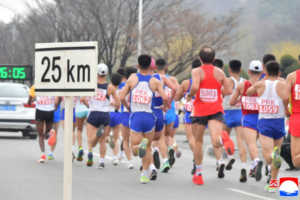A morning walk through the streets of Kaesong. An idyllic drive through the North Korean countryside. An ordinary resident playing a mobile game on a modern smartphone.
At first glance, these videos and others shared by the new TikTok channel “Life in North Korea” bear the hallmarks of state propaganda aimed at portraying the country as a socialist paradise. International media have even described the account, which now boasts over 200,000 followers and counting, as Pyongyang’s latest foray into spreading propaganda online after past efforts on YouTube.
A morning walk through the streets of Kaesong. An idyllic drive through the North Korean countryside. An ordinary resident playing a mobile game on a modern smartphone.
At first glance, these videos and others shared by the new TikTok channel “Life in North Korea” bear the hallmarks of state propaganda aimed at portraying the country as a socialist paradise. International media have even described the account, which now boasts over 200,000 followers and counting, as Pyongyang’s latest foray into spreading propaganda online after past efforts on YouTube.
Try unlimited access
Only $1 for four weeks
-
Unlimited access to all of NK News: reporting, investigations, analysis
-
Year-one discount if you continue past $1 trial period
-
The NK News Daily Update, an email newsletter to keep you in the loop
-
Searchable archive of all content, photo galleries, special columns
-
Contact NK News reporters with tips or requests for reporting
Get unlimited access to all NK News content, including original reporting, investigations, and analyses by our team of DPRK experts.
Subscribe
now
All major cards accepted. No commitments – you can cancel any time.











